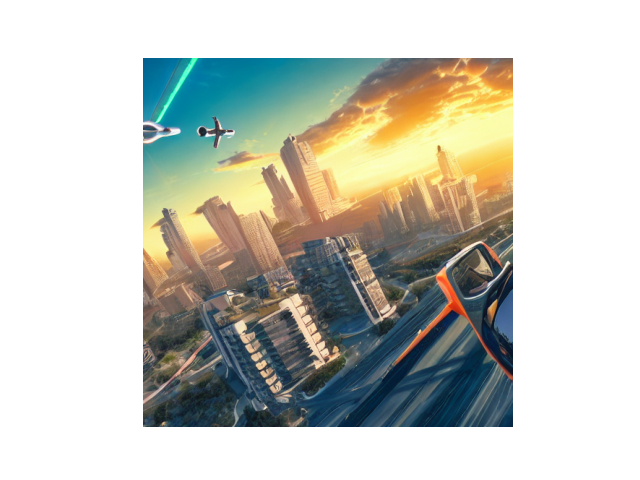Generative AI 8: Diffusion Models and Stable Diffusion
Diffusion models are a class of generative models that create data by learning the reverse process of data corruption. In the case of text-to-image generation models like Stable Diffusion, the model starts with random noise and iteratively refines it to generate an image based on a given text prompt. These models have gained popularity due to their ability to generate high-quality, diverse, and realistic images from text descriptions.
8.1 What are Diffusion Models?
Diffusion Process:
- Forward Process (Noise Addition): In diffusion models, data (e.g., an image) is progressively corrupted by adding noise over multiple steps until it becomes pure noise.
- Reverse Process (Noise Removal): The model learns to reverse this process by gradually removing noise from a noisy input to generate a realistic image.
Mathematical Overview:
-
Forward Process: The data \(\mathbf{x}_0\) is corrupted by adding Gaussian noise over \(T\) timesteps.
\[q(\mathbf{x}_t | \mathbf{x}_{t-1}) = \mathcal{N}(\mathbf{x}_t; \sqrt{\alpha_t} \mathbf{x}_{t-1}, (1 - \alpha_t) \mathbf{I})\]Here, \(\mathbf{x}_t\) represents the noisy image at step \(t\), and \(\alpha_t\) controls the amount of noise added.
-
Reverse Process: The model learns to predict the denoised image at each timestep.
\[p(\mathbf{x}_{t-1} | \mathbf{x}_t) = \mathcal{N}(\mathbf{x}_{t-1}; \mu_\theta(\mathbf{x}_t, t), \Sigma_\theta(\mathbf{x}_t, t))\]The reverse process is modeled by a neural network that predicts the clean image step-by-step.
Objective:
The model’s goal is to generate realistic images by learning how to reverse the noisy forward process. The final generated image is obtained by iteratively denoising starting from pure noise.
8.2 Stable Diffusion
Stable Diffusion is a state-of-the-art text-to-image model that uses diffusion processes to generate high-quality images from text prompts. Unlike traditional GAN-based image generation models, Stable Diffusion relies on diffusion models for sampling.
How Stable Diffusion Works:
- Text Input: The user provides a textual description (e.g., “A cat sitting on a beach during sunset”).
- Text Encoding: The text is encoded using a pre-trained language model (e.g., CLIP) to capture the semantic meaning of the text.
- Noise Initialization: The model starts with a noisy image and uses the encoded text as guidance to refine the image through a series of denoising steps.
- Denoising Steps: At each step, the model predicts how the noise should be reduced to generate an image that aligns with the text description.
- Final Image: After the final denoising step, the model outputs a high-quality image that matches the text prompt.
Generating Images with Stable Diffusion
You can generate images using Stable Diffusion by leveraging the Hugging Face Diffusers library. Here’s a step-by-step example to generate an image from a text prompt.
Python Code:
from diffusers import StableDiffusionPipeline
import torch
import matplotlib.pyplot as plt
# Load the Stable Diffusion pipeline
pipe = StableDiffusionPipeline.from_pretrained("CompVis/stable-diffusion-v1-4").to("cuda")
# Define the text prompt
prompt = "A futuristic cityscape at sunset with flying cars"
# Generate the image
image = pipe(prompt).images[0]
# Display the generated image
plt.imshow(image)
plt.axis('off')
plt.show()
Output:

Explanation:
- StableDiffusionPipeline: This is the pipeline that handles text-to-image generation using Stable Diffusion.
- Prompt: You define a text prompt that describes the image you want to generate (e.g., “A futuristic cityscape at sunset with flying cars”).
- Image Generation : The model generates an image based on the input text.
8.4 Latent Diffusion Models (LDMs)
Stable Diffusion is based on Latent Diffusion Models (LDMs), which operate in a latent space rather than directly on pixel data. This makes the model more efficient in terms of memory and computation.
Key Features of LDMs:
- Efficiency: LDMs compress images into a lower-dimensional latent space, making the diffusion process faster and less memory-intensive.
- High-Quality Generation: Despite working in latent space, LDMs can generate high-resolution images by learning the key features of the image in compressed form.
8.5 Customizing Stable Diffusion
You can fine-tune Stable Diffusion or adjust various parameters to customize the generated images:
Control Parameters:
- Guidance Scale: Controls how strongly the image generation is guided by the text prompt. A higher guidance scale leads to images that more closely match the text prompt.
- Number of Inference Steps: Determines the number of denoising steps. More steps generally produce higher-quality images but take longer.
Python Code:
# Customizing Stable Diffusion parameters
guidance_scale = 7.5 # Strength of text guidance
num_inference_steps = 50 # Number of denoising steps
# Generate an image with custom parameters
image = pipe(prompt, guidance_scale=guidance_scale, num_inference_steps=num_inference_steps).images[0]
# Display the generated image
plt.imshow(image)
plt.axis('off')
plt.show()
Output:

8.6 Applications of Stable Diffusion
- Art Generation: Artists and designers use Stable Diffusion to generate creative and unique artwork from textual descriptions.
- Image Super-Resolution: Diffusion models can be applied to image upscaling tasks, where low-resolution images are enhanced to high-resolution versions.
- Medical Imaging: In healthcare, diffusion models are being explored for generating synthetic medical images for research and training purposes.
- Gaming and Virtual Worlds: Game developers use text-to-image generation to quickly create game assets such as characters, landscapes, and objects.
8.7 Key Advantages of Diffusion Models
- High Quality and Diversity: Diffusion models can generate highly realistic and diverse images, even for complex text prompts.
- Fine Control: Users have control over the image generation process through parameters like guidance scale and number of inference steps.
- Reduced Mode Collapse: Unlike GANs, which can suffer from mode collapse (generating limited types of outputs), diffusion models tend to generate a wider variety of outputs.
Summary:
- Diffusion models generate data by learning to reverse a noise-adding process. They start with random noise and iteratively refine it to produce realistic data.
- Stable Diffusion is a state-of-the-art text-to-image model that generates high-quality images based on text prompts. It uses latent diffusion models for computational efficiency.
- Hugging Face Diffusers provides a convenient way to use pre-trained diffusion models for text-to-image generation tasks.
Comments